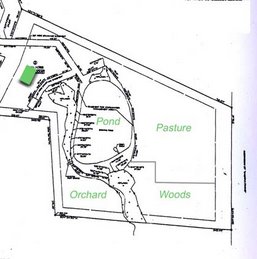 The National Wildlife Federation encourages development of backyward wildlife habitats through the Certified Wildlife Habitat program. Sure, this is a clever way to garner donations, but it's also a good way to learn about techniques that can make your garden more welcoming to wildlife. From the NWF website:
The National Wildlife Federation encourages development of backyward wildlife habitats through the Certified Wildlife Habitat program. Sure, this is a clever way to garner donations, but it's also a good way to learn about techniques that can make your garden more welcoming to wildlife. From the NWF website:"The way we choose to manage the land under our care has had major effects on wildlife habitat. ... By choosing what has now come to be known as 'conventional' landscaping options - ones dominated by lawn, ornamental plants, and dependence on chemicals and supplemental watering - we have disturbed the balance of the ecosystem and banished the wildlife from the land we once shared. The continued conversion of natural areas into such landscapes has resulted in drastic reduction of habitat and the disappearance of many species of wildlife. We can, however, choose to create landscapes that help restore the ecological balance. We can choose to invite the wild plants and animals back into the land and our lives."
Here's what we've done to garden for wildlife and to qualify for certification:
- Food Sources: Our garden offers seeds, berries, foliage, pollen, and nectar. We also have supplemental seed feeders for birds.
- Water Sources: We have a spring-fed pond and a stream.
- Places for Cover: There are wooded areas and thickets, as well as a meadow. We created a brush pile from dead tree branches. The pond area also provides cover, especially through the aquatic plants around the perimeter.
- Places to Raise Young: The meadow, thickets, wetlands, and pond all fit the bill. We've also built a nesting box for wood ducks.
- Sustainable Gardening: We use a drip irrigation system on our shrubs and in the orchard, and we have a compost area. We also have been aggressively working to eliminate the invasive multiflora rose (the pasture and orchard used to be completely impassable due to this nasty weed).
Now our patch of land has joined over 70,000 other wildlife-friendly spaces. Yours could, too; get started here.





No comments:
Post a Comment